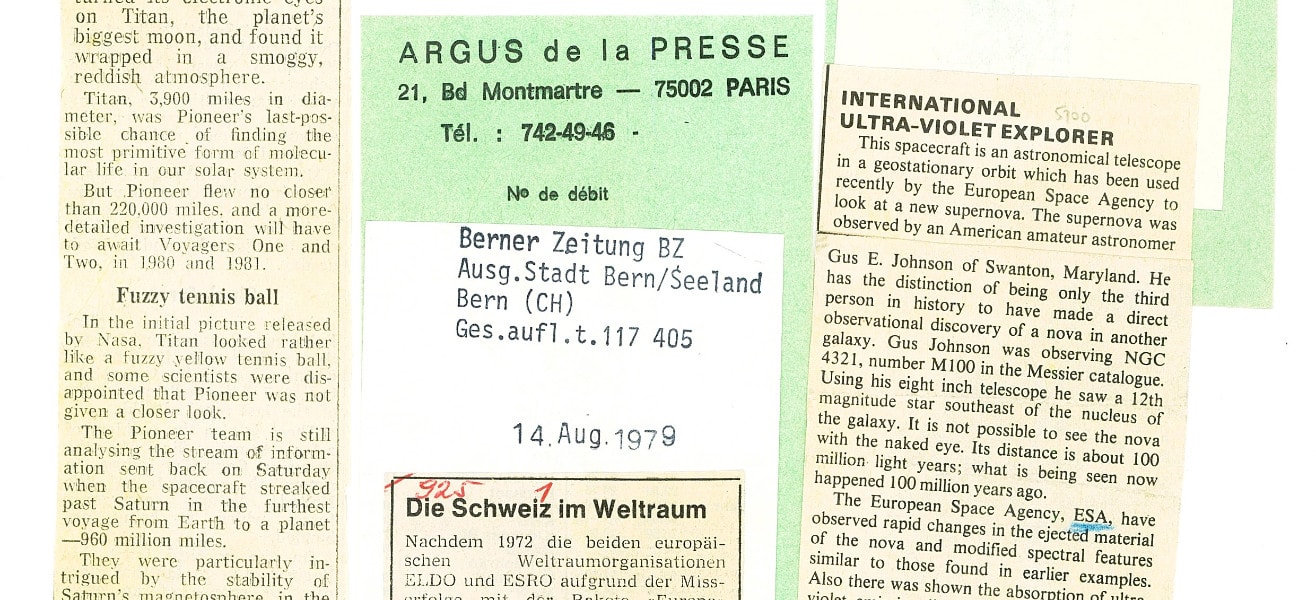A key aspect of professional development for archivists (and more generally anyone working in conservation or preservation) is keeping up to date with the constant evolution of the tools they need to use for their work. And an interesting consequence to this is that most archives end up with not just historical content in their collections, but also historical methods of preservation, that themselves need to be safeguarded and passed on to future generations!
With that in mind, this article will be the first in regular series talking about the history of preservation, dedicated to the methods and tools of the analogue world, for a society increasingly made up of digital natives. Those who remember life before, can instead take the opportunity to reminisce on the way we were and recall some of these largely-forgotten aspects of life!
While digital digests of press coverage are still alive and well, appearing in our inboxes today, the press cuttings of the pre-digital world were physical objects – pieces of text or images removed from newspapers to be kept on file for future reference. Specialist press cuttings agencies existed to provide this service for clients, but many organisations also used in-house staff for this task. A quick poll of the Archives team reveals one colleague whose first job involved spending every Monday morning scanning through the weekend papers for any mentions of their employer (a national museum), with a pair of scissors at the ready to snip out the relevant text. Another colleague fondly recalls the extensive collection of press cuttings held by a relative on topics that interested them, reminding us that press cuttings were kept in both professional and personal contexts. (This relative was so well organised that they bought two copies of each newspaper to be able to cut out articles from both the front and back of each page and not forfeit any information).
Here at ESA, international press cuttings were published monthly by the ESOC Communications Office and the majority of these files are contained in the ESA Archives held at the Historical Archives of the European Union, hosted by the European University Institute in Florence. The ECSR has digitised a small selection of cuttings files in the SHIP database, as an example of the format of the documents and the kinds of topics that were generally included, featuring articles from the British, Dutch, French, German, Italian, Spanish and US press.
A compilation of the monthly cuttings from March to August 1979, for example, includes cuttings picked up by a Paris-based agency alongside others with handwritten annotations, presumably gathered by staff working in ESA (see image below). Space topics featuring in the international press at the time included the preparations for the first Ariane launch (in December 1979), the record-breaking 175 days in space by two Soviet cosmonauts, the NASA Skylab station’s re-entry and the ESA Spacelab programme. There are also some tantalising titles, such as Space Oddity: Body with Motion Anomaly, from the 30 April 1979 International Herald Tribune, or A solar smorgasbrod, from the 1 August Financial Times!
Other files bring together cuttings on ESA programmes, including an extensive collection covering the European Remote Sensing satellite, ERS-1, from the late 1970s to the early 1990s and on monitoring of the global environment in general. There are also files on the Hermes spaceplane from 1982 until the cancellation of the programme in 1992, and on the Hipparcos satellite, the first space-based astrometric survey. The cuttings report on the satellite’s dramatic first days after launch when it failed to reach geostationary orbit, prior to successfully conducting revised science operations and achieving its goal of 30 months of observations. These programme files generally contain a strong focus on German press coverage, supplied by German press cuttings agencies.
We are very grateful to the teams who worked behind the scenes to compile these dossiers, allowing us such a valuable window into how cooperation in space, and topics like global climate change and space debris - which resonate even more strongly today - were reported in the past.
More information
To browse the cuttings currently available in SHIP, use the search term ‘press’.
Have a personal collection of books, press cuttings or photos? Check the British Library’s advice on conservation.

